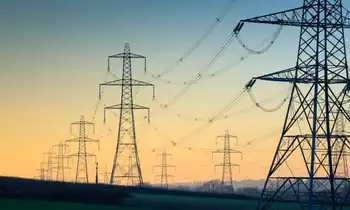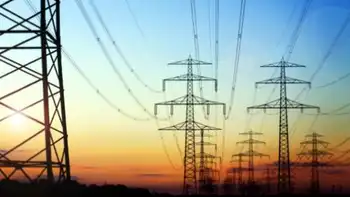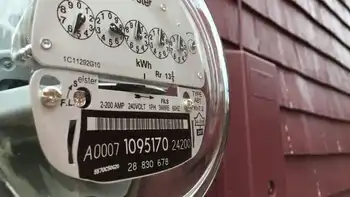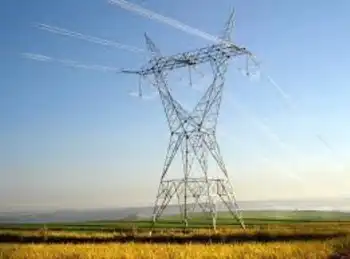Two nuclear workers in hospital
By Toronto Star
NFPA 70e Training
Our customized live online or in‑person group training can be delivered to your staff at your location.

- Live Online
- 6 hours Instructor-led
- Group Training Available
The unusual sights of scarcity in one of the world's richest, most modern capitals came a day after city officials reported that radioactive iodine in Tokyo's tap water measured more than twice the level considered safe for babies.
Radiation has been leaking from a nuclear plant 220 kilometres northeast of Tokyo since it was slammed by the March 11 quake and engulfed by the ensuing tsunami. Feverish efforts to get the plant's crucial cooling system back in operation have been beset by explosions, fires and radiation scares.
Two workers at the Fukushima Daiichi plant were treated at a hospital after stepping in contaminated water while laying electrical cables in one unit, nuclear and government officials said. The water seeped over the top of their boots and onto their legs, said Takashi Kurita, spokesman for plant owner Tokyo Electric Power Co.
The two workers likely suffered “beta ray burns,” Tokyo Electric officials said, citing doctors. They tested at radiation levels between 170 to 180 millisieverts, well below the maximum 250 millisieverts allowed for workers, said Fumio Matsuda, a spokesman for the Nuclear and Industrial Safety Agency.
More than two-dozen people have been injured trying to bring the plant under control.
The developments highlighted the challenges Japan faces after a magnitude-9.0 quake off Sendai triggered a massive tsunami. An estimated 18,000 people have been killed and hundreds of thousands have been left homeless as officials scramble to avert a major nuclear crisis.
Radiation has seeped into raw milk, seawater and 11 kinds of vegetables, including broccoli, cauliflower and turnips, grown in areas around the plant.
The U.S. and Australia were halting imports of Japanese dairy and produce from the region, Hong Kong said it would require that Japan perform safety checks on meat, eggs and seafood, and Canada said it would upgrade controls on imports of Japanese food products. Singapore, too, has banned the sale of milk, produce, meat and seafood from areas near the plant.
Concerns also spread to Europe. In Iceland, officials said they measured trace amounts of radioactive iodine in the air but assured residents it was “less than a millionth” of levels found in European countries in the wake of the 1986 Chernobyl disaster.
Radioactive iodine is short-lived, with a half-life of eight days — the length of time it takes for half of it to break down harmlessly. However, experts say infants are particularly vulnerable to radioactive iodine, which can cause thyroid cancer.
In Tokyo, government spokesman Yukio Edano pleaded for calm, and said the government was considering importing bottled water from other countries to cover any shortages. Officials urged residents to avoid panicked stockpiling, sending workers to distribute 240,000 bottles — enough for three small bottles of water for each of the 80,000 babies under age 1 registered with the city.
That didn't stop Reiko Matsumoto, mother of 5-year-old Reina, from rushing to a nearby store to stock up.
“The first thought was that I need to buy bottles of water,” the Tokyo real estate agent said. “I also don't know whether I can let her take a bath.”
New readings showed Tokyo tap water was back to safe levels, but the relief was tempered by elevated levels of the cancer-linked isotope in two neighbouring prefectures: Chiba and Saitama. A city in a third prefecture, just south of the nuclear plant, also showed high levels of radioactive iodine in tap water, officials said.
Tap water in Kawaguchi City in Saitama, north of Tokyo, contained 210 becquerels of radioactive iodine — well above the 100 becquerels considered safe for babies but below the 300-becquerel level for adults, Health Ministry official Shogo Misawa said.
In Chiba prefecture, the water tested high for radiation in two separate areas, said water safety official Kyoji Narita. The government there warned families in 11 cities in Chiba not to feed infants tap water.
“The high level of iodine was due to the nuclear disaster,” Narita said. “There is no question about it.”
Radiation levels also tested dangerously high in Hitachi in Ibaraki prefecture, about 120 kilometres south of the Fukushima plant, city water official Toshifumi Suzuki said. Officials were distributing bottled water, he said.
The limits refer to sustained consumption rates, and officials said parents should stop using tap water for baby formula but that it was no problem for infants to consume small amounts.
Still, shelves were bare in many stores across Tokyo.
Maruetsu supermarket in central Tokyo sought to impose buying limits on specific items to prevent hoarding: only one carton of milk per family, one 5-kilogram bag of rice, one package of toilet paper, one pack of diapers, signs said. Similar notices at some drugs stores told women they could only purchase two feminine hygiene items at a time.
Maruetsu spokeswoman Kayoko Kano acknowledged that the earthquake and tsunami resulted in delays of some products.
A spokesman for Procter & Gamble Japan said its plant was fully operational but that rolling blackouts in Tokyo may be affecting distribution. “Consumers are nervous, and they may be buying up supplies,” Noriyuki Endo added.
Hardship continued in the frigid, tsunami-struck northeast. Some 660,000 households still do not have water, the government said. Electricity has not been restored to some 209,000 homes, Tohoku Electric Power Co. said. Damage is estimated at $309 billion, making it the most costly natural disaster on record.
In Fukushima, farmer Sumiko Matsuno went out to her fields and dug up all the vegetables she could — not to sell but to eat.
“If it's in the ground, it's still safe,” she said. “The leafy ones are no good anymore. We are digging up all our carrots and onions as fast as we can.”
Matsuno, 65, said she was worried about the future.
“If this goes on, it is going to really hurt us.”











